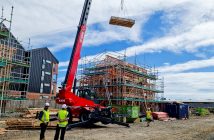The unemployment rate rebounded in the March quarter lifting from (an upwardly revised) 5.4 percent to 5.7 percent. This was a bigger lift than the market had anticipated.
Despite this rise in unemployment, Westpac interprets the data as strong. The rise in unemployment simply partially unwinds a mysterious fall last quarter. Meanwhile, there was a surprisingly big lift in employment.
The Household Labour Force Survey (HLFS) employment grew a very solid 1.2 percent, strength that was corroborated by a strong lift (1.2 percent) in Quarterly Employment Survey (QES) full time employment. Total hours paid grew at a more measured pace, up 0.5 percent in the quarter.
Instead of being driven by soft jobs growth, the lift in the unemployment rate was driven by a big rebound in the participation rate, which rose from 68.4 percent in the December quarter to 69 percent in the March quarter. This effectively unwinds the fall in the participation rate over the last two quarters, but still leaves participation below the record high of 69.5 percent reached in December 2015.
Wage growth remains subdued, although the quarterly outturn was a touch higher than the market had pencilled in. The Labour Cost Index (LCI) that covers salaries and wages increased 0.4 percent in the quarter, which still leaves annual wage inflation at just 1.7 percent.
“Overall the data suggests the labour market started 2016 in good health. Although firms have lingering concerns about the impact on the New Zealand economy of the dairy downturn, this hasn’t translated to a reduction in hiring (although it may still do so further down the track). There appears to be little to worry the Reserve Bank of New Zealand on the inflation front from the date and, at the margin, it may feel slightly more comfortable about its inflation outlook. Strong jobs growth points to solid activity in the New Zealand economy in the first three months of the year,” says Anne Boniface, senior economist at Westpac.
“This probably reinforces its more enthusiastic view on the New Zealand economy it conveyed in the April OCR review. However, as the lift in participation shows, the economy is having little trouble adding people to the labour force, meaning wage growth remains subdued.
“After initially falling on the weaker than expected headline unemployment rate, the NZD/USD rebounded, rising 0.15 cents, and two-year swap rates were up one basis point. This is the correct direction of market response, in our view.”




